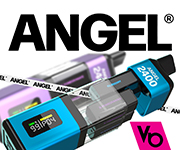Gonloopy
Veteran
- Joined
- Apr 7, 2013
- Messages
- 5,627
Details
Created on Saturday, 21 December 2013 22:02
Presenting to the FDA real evidence about e-cigarettes
US regulators and advocates showing the road to the Europeans
By Dr Farsalinos
It is now the appropriate time to reveal the reason for my visit to the US. On December 19, a very successful meeting with FDA’s Center for Tobacco Products (CTP) officials took place at the FDA headquarters in Rockville-Maryland. The meeting was organized by American E-Liquid Manufacturing Standards Association (AEMSA), who invited me to present hard evidence, which means results from clinical studies, on the use of new generation devices and refillable atomizers in front of the US regulators.
After a very warm welcome and in front of an audience of more than 20 officials (most of them present into the room while some directly connected with the conference room through phone lines), the discussion was purely about evidence and the implications of our findings on both individual and population level. AEMSA had previously met twice with the FDA. Over the past few months we had some extensive discussions with AEMSA in order to be able to assess the concerns expressed by the FDA and ways to address them. During this process, I developed two protocols for clinical studies, evaluating the effects of e-cigarette use on nicotine absorption, specifically assessing the effects of new generation devices and refillables compared with cigarette-like devices and with tobacco cigarettes. The protocols were fully supported by AEMSA and were performed in the past 3 months.
It should be emphasized that when the FDA was first approached, their response was immediate (within 24 hours) and positive. The meeting was arranged after we were able to determine the time when we could have the results of the research available and analyzed. The behavior of the FDA officials during the meeting can be described with two words: respect and a lot of attention to what we had to say. I was really surprised to see them not only taking notes during our presentation, but also engaging to the discussion by making key questions and allowing us to present our future plans for research, which will provide even more evidence in terms of the population and individual effects of e-cigarette use. After the lengthy meeting, we were invited to come back whenever we have new evidence to present to them.
During the meeting, we presented data showing that new generation devices with refillable atomizers were up to 70% more effective in nicotine delivery compared with 1st generation (cigarette-like) devices. Moreover, we presented comparative data showing that even new generation devices are much slower in nicotine delivery compared to tobacco cigarettes. In facts, vapers need to use such devices for approximately 30min in order to get plasma nicotine levels similar to those found after smoking 1 tobacco cigarette. In another study, smokers who were using the e-cigarette for the first time showed significantly lower nicotine absorption compared to experienced users. Therefore, we provide sufficient data indicating that the addictive potential of e-cigarettes (even the new generation devices) is much lower compared to smoking, while at the same time we proved that new-generation devices are much more efficient and probably more effective for smokers. Moreover, we have shown that there is no chance of overdose or intoxication from e-cigarette use in naïve users, even when a new generation device is used. Of note, an 18mg/ml e-liquid was used in both studies. I doubt if a nicotine-containing liquid with double concentration would deliver nicotine similar to a tobacco cigarette.
Besides information on nicotine absorption, we had the opportunity to present data on the impact of flavors in e-cigarette experience andthe characteristics of the vapers’ population who is using new generation devices. AEMSA brought some new generation devices and more than 15 minutes were dedicated to showing them how they work and what are their advantages and disadvantages compared to cigarette-like devices.
Will the FDA take into consideration our presentation? By seeing their reactions and facial expressions during the presentation and by interpreting their questions and interest to get as much information as possible, I believe they will certainly do so. Of course we know that they have already submitted their recommendations for e-cigarette regulation, but there is a lengthy negotiation procedure ahead and a lot of things can change. More importantly, we should proceed with new studies which will provide more information to the regulators so that they will make proper decisions.
Two significant lessons are to be learned from this experience. Unlike the FDA, European regulators have completely ignored science (and are continuing to do so). It is impressive to see the immediate acceptance from the FDA of our proposal to meet, while at the same time Europeans do not even bother to reply to emails. Instead of the ridiculous 3 minutes period I was allowed to speak during a meeting in the EU headquarters in Brussels (March 2013), FDA allowed us to discuss for more than 90 minutes. European e-cigarette advocates and the industry should also learn some lessons from AEMSA, from the way regulators were approached and by realizing that unless you provide them with hard evidence and scientific data none will take you seriously. There may be some hope in the US that FDA proposals will get better as the negotiation progresses. For Europe, I am afraid the e-cigarette and the chance to revolutionize tobacco harm reduction have suffered a serious setback.
Created on Saturday, 21 December 2013 22:02
Presenting to the FDA real evidence about e-cigarettes
US regulators and advocates showing the road to the Europeans
By Dr Farsalinos
It is now the appropriate time to reveal the reason for my visit to the US. On December 19, a very successful meeting with FDA’s Center for Tobacco Products (CTP) officials took place at the FDA headquarters in Rockville-Maryland. The meeting was organized by American E-Liquid Manufacturing Standards Association (AEMSA), who invited me to present hard evidence, which means results from clinical studies, on the use of new generation devices and refillable atomizers in front of the US regulators.
After a very warm welcome and in front of an audience of more than 20 officials (most of them present into the room while some directly connected with the conference room through phone lines), the discussion was purely about evidence and the implications of our findings on both individual and population level. AEMSA had previously met twice with the FDA. Over the past few months we had some extensive discussions with AEMSA in order to be able to assess the concerns expressed by the FDA and ways to address them. During this process, I developed two protocols for clinical studies, evaluating the effects of e-cigarette use on nicotine absorption, specifically assessing the effects of new generation devices and refillables compared with cigarette-like devices and with tobacco cigarettes. The protocols were fully supported by AEMSA and were performed in the past 3 months.
It should be emphasized that when the FDA was first approached, their response was immediate (within 24 hours) and positive. The meeting was arranged after we were able to determine the time when we could have the results of the research available and analyzed. The behavior of the FDA officials during the meeting can be described with two words: respect and a lot of attention to what we had to say. I was really surprised to see them not only taking notes during our presentation, but also engaging to the discussion by making key questions and allowing us to present our future plans for research, which will provide even more evidence in terms of the population and individual effects of e-cigarette use. After the lengthy meeting, we were invited to come back whenever we have new evidence to present to them.
During the meeting, we presented data showing that new generation devices with refillable atomizers were up to 70% more effective in nicotine delivery compared with 1st generation (cigarette-like) devices. Moreover, we presented comparative data showing that even new generation devices are much slower in nicotine delivery compared to tobacco cigarettes. In facts, vapers need to use such devices for approximately 30min in order to get plasma nicotine levels similar to those found after smoking 1 tobacco cigarette. In another study, smokers who were using the e-cigarette for the first time showed significantly lower nicotine absorption compared to experienced users. Therefore, we provide sufficient data indicating that the addictive potential of e-cigarettes (even the new generation devices) is much lower compared to smoking, while at the same time we proved that new-generation devices are much more efficient and probably more effective for smokers. Moreover, we have shown that there is no chance of overdose or intoxication from e-cigarette use in naïve users, even when a new generation device is used. Of note, an 18mg/ml e-liquid was used in both studies. I doubt if a nicotine-containing liquid with double concentration would deliver nicotine similar to a tobacco cigarette.
Besides information on nicotine absorption, we had the opportunity to present data on the impact of flavors in e-cigarette experience andthe characteristics of the vapers’ population who is using new generation devices. AEMSA brought some new generation devices and more than 15 minutes were dedicated to showing them how they work and what are their advantages and disadvantages compared to cigarette-like devices.
Will the FDA take into consideration our presentation? By seeing their reactions and facial expressions during the presentation and by interpreting their questions and interest to get as much information as possible, I believe they will certainly do so. Of course we know that they have already submitted their recommendations for e-cigarette regulation, but there is a lengthy negotiation procedure ahead and a lot of things can change. More importantly, we should proceed with new studies which will provide more information to the regulators so that they will make proper decisions.
Two significant lessons are to be learned from this experience. Unlike the FDA, European regulators have completely ignored science (and are continuing to do so). It is impressive to see the immediate acceptance from the FDA of our proposal to meet, while at the same time Europeans do not even bother to reply to emails. Instead of the ridiculous 3 minutes period I was allowed to speak during a meeting in the EU headquarters in Brussels (March 2013), FDA allowed us to discuss for more than 90 minutes. European e-cigarette advocates and the industry should also learn some lessons from AEMSA, from the way regulators were approached and by realizing that unless you provide them with hard evidence and scientific data none will take you seriously. There may be some hope in the US that FDA proposals will get better as the negotiation progresses. For Europe, I am afraid the e-cigarette and the chance to revolutionize tobacco harm reduction have suffered a serious setback.











